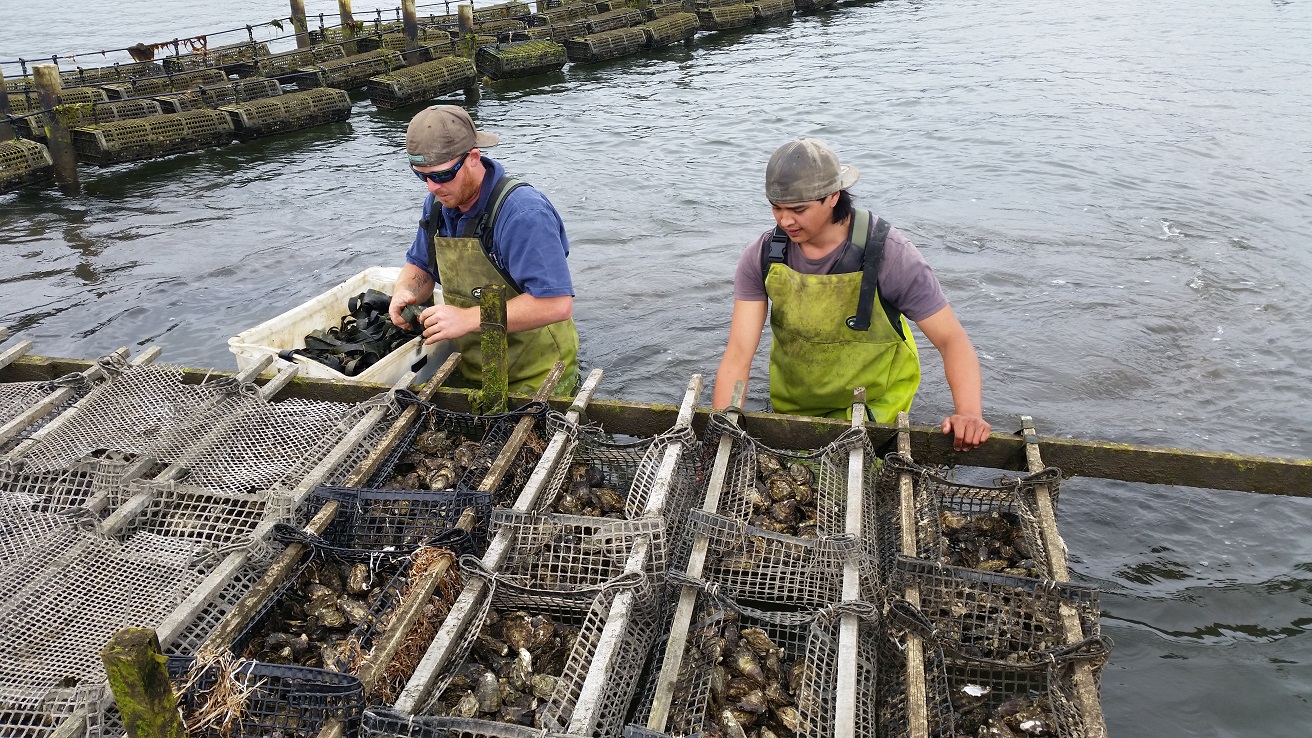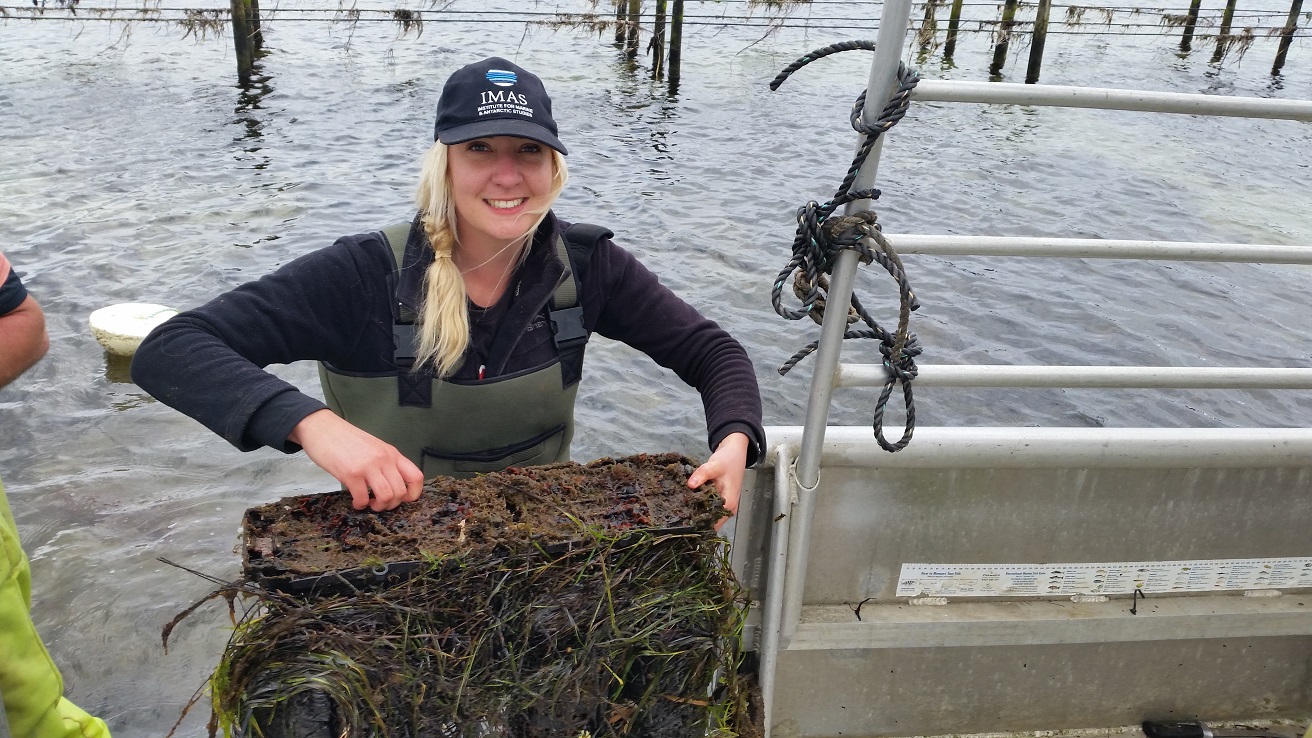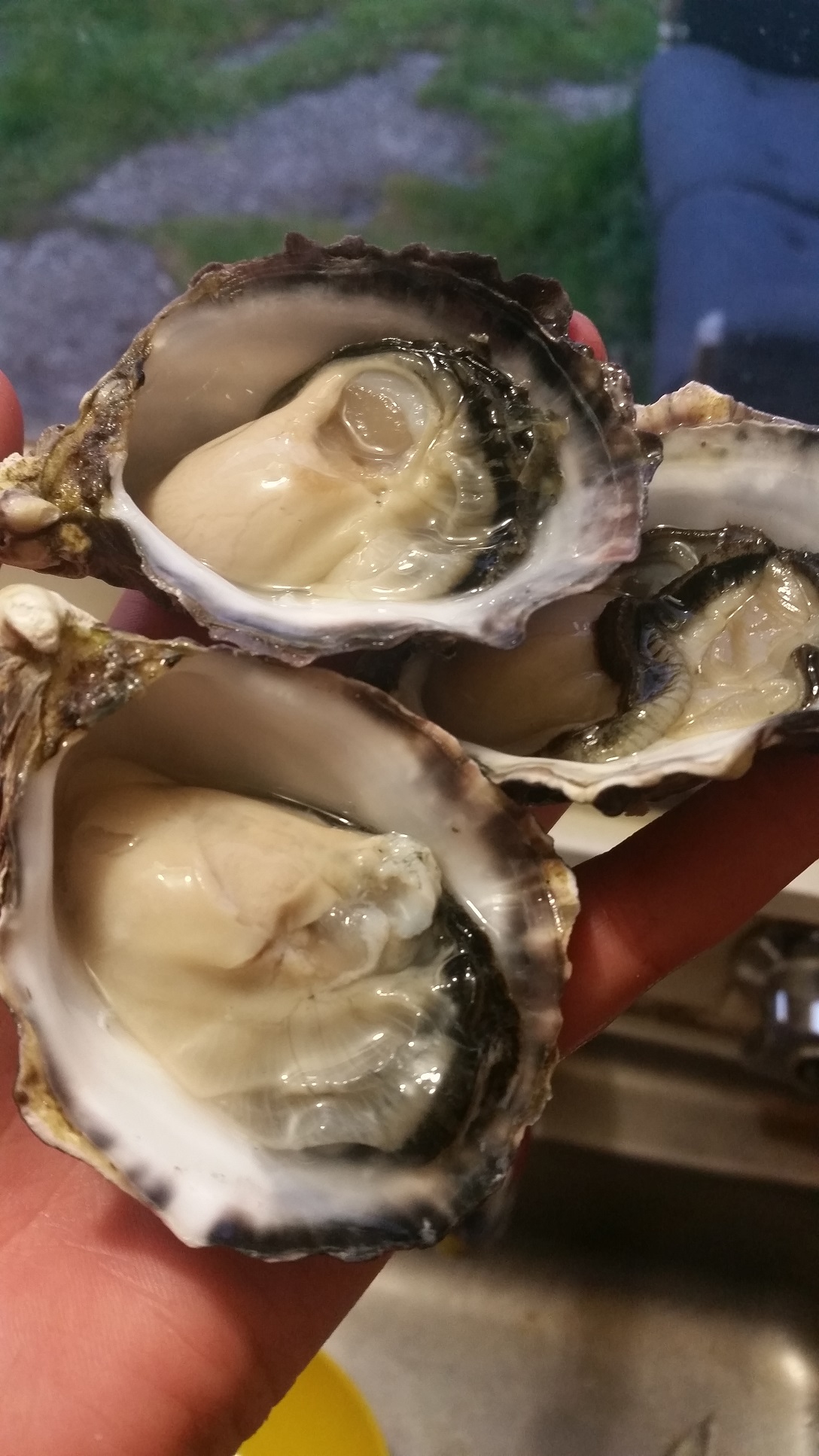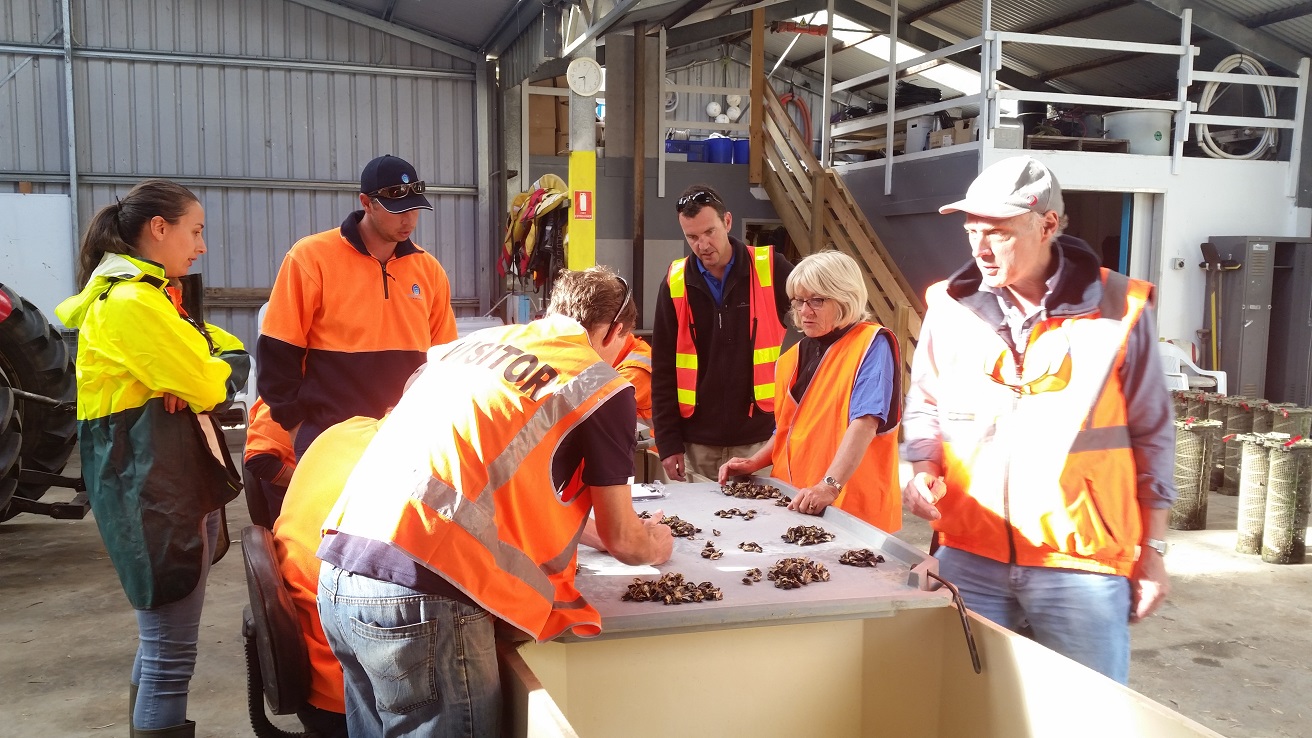
IMAS scientists are working with Tasmanian oyster farmers in preparation for the annual summer onset of the Pacific Oyster Mortality Syndrome (POMS) virus.
Researchers Dr Christine Crawford, Dr Sarah Ugalde, and Lewis Christensen are helping oyster farmers to design projects and deploy experimental oysters in a bid to work out what they can do to reduce mortalities and the overall impact of POMS.
 Dr Ugalde (pictured, left) said the virus first arrived in Tasmania in early 2016 and quickly spread to five major oyster growing areas.
Dr Ugalde (pictured, left) said the virus first arrived in Tasmania in early 2016 and quickly spread to five major oyster growing areas.
“Although the POMS virus isn’t harmful to humans, it is highly contagious and can be fatal to farmed Pacific oysters around the world,” Dr Ugalde said.
 “The virus has resulted in oyster mortalities of up to 95% on infected farms in Tasmania and has impacted the $53 million Australian Pacific oyster industry.
“The virus has resulted in oyster mortalities of up to 95% on infected farms in Tasmania and has impacted the $53 million Australian Pacific oyster industry.
“IMAS is helping industry to work out how to farm oysters in POMS affected areas by looking at ways to reduce mortalities that are associated with different husbandry and farm management strategies, such as handling, stocking density, height in the water column, and oyster size or age.
“These are considered hand-in-hand with the environmental factors, such as water temperature.
“Initial research has made good progress but highlighted complex disease dynamics and high spatial variability and patchiness in oyster mortalities around Tasmania.”
IMAS recently released the report of a research project carried out by Drs Crawford and Ugalde and John Preston from Biosecurity Tasmania that recorded the views, data and observations of farmers during the summer season 2016/17.
The survey information will contribute to the evolution of farm management and husbandry techniques to reduce the  impact of POMS, and identify industry’s research priorities and gaps in available information.
impact of POMS, and identify industry’s research priorities and gaps in available information.
(Image, left, researchers counting dead oysters. Credit: Sarah Ugalde)
This research is supported by the Department of Industry, Innovation and Science funded Future Oysters CRC-P.
More information on the disease and research progress is available here.